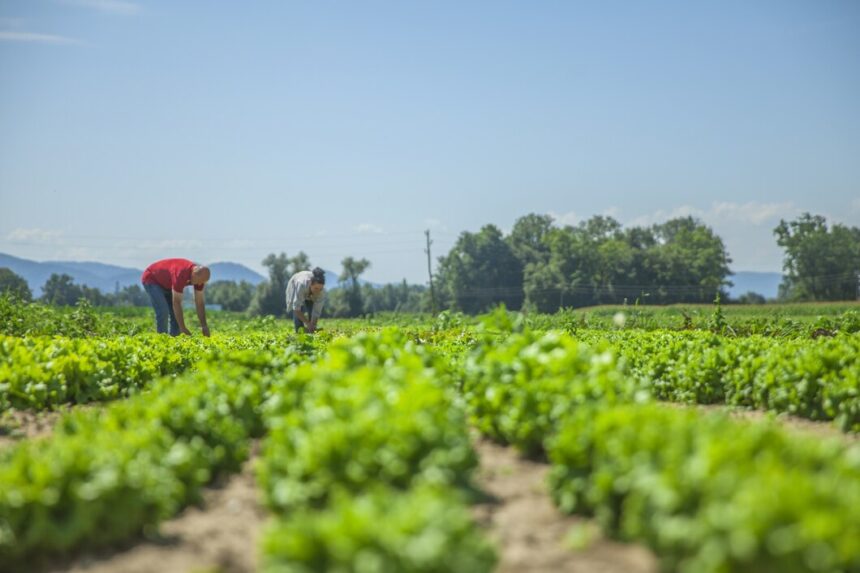In the intricate dance of agriculture, the presence of beneficial insects can be a farmer’s greatest ally. These unsung heroes of the ecosystem play a crucial role in pest control, pollination, and soil health, contributing to bountiful harvests and sustainable farming practices. By intentionally creating habitat for beneficial insects on the farm, farmers can harness the power of nature to enhance crop resilience, reduce reliance on chemical inputs, and foster ecological balance. Let’s explore how farmers can cultivate habitats to attract and support beneficial insects:
1. Know Your Allies:
Before embarking on habitat creation, it’s essential to familiarize yourself with the beneficial insects that inhabit your region and ecosystem. These may include pollinators such as bees, butterflies, and hoverflies, as well as predators and parasitoids that prey on common agricultural pests.
2. Provide Food Sources:
Beneficial insects require nectar, pollen, and other food sources to thrive and reproduce. Plant a diverse array of flowering plants, herbs, and cover crops throughout the farm to provide a continuous supply of food for beneficial insects throughout the growing season.
3. Create Shelter and Nesting Sites:
Offering shelter and nesting sites is essential for many beneficial insects, especially solitary bees, parasitic wasps, and predatory insects. Install nesting boxes, bee hotels, and habitat structures such as hedgerows, brush piles, and rockeries to provide refuge and breeding habitat for beneficial insects.
4. Practice Integrated Pest Management (IPM):
Integrate habitat creation with IPM strategies to maximize the effectiveness of beneficial insects in pest control. Monitor pest populations, implement cultural controls, and use targeted pesticide applications only as a last resort to minimize harm to beneficial insects and preserve ecological balance.
5. Enhance Landscape Diversity:
Encourage landscape diversity by preserving natural areas, hedgerows, and riparian zones, and minimizing monoculture cropping systems. A diverse landscape provides habitat for a wide range of beneficial insects and promotes ecosystem resilience and stability.
6. Minimize Disturbance:
Minimize disturbance and disruption to natural habitats to create a stable and hospitable environment for beneficial insects. Avoid excessive tillage, overgrazing, and habitat destruction, and maintain buffer zones and wildlife corridors to protect habitat integrity.
7. Provide Water Sources:
Ensure access to clean water sources such as ponds, streams, and water troughs to meet the hydration needs of beneficial insects, especially during hot and dry periods. Consider installing shallow dishes or saucers filled with water and pebbles to create drinking stations for butterflies and bees.
8. Adopt Agroforestry Practices:
Incorporate agroforestry practices such as alley cropping, windbreaks, and silvopasture into the farm landscape to enhance habitat diversity and provide additional resources for beneficial insects. Trees and shrubs can provide food, shelter, and nesting sites for a wide range of beneficial insects.
9. Foster Collaboration and Education:
Engage with local conservation organizations, agricultural extension services, and community groups to learn from experts, share experiences, and collaborate on habitat creation initiatives. Educate farm workers, neighbors, and stakeholders about the importance of beneficial insects and the role they play in sustainable agriculture.
10. Monitor and Evaluate:
Regularly monitor and evaluate the effectiveness of habitat creation efforts, including insect populations, crop health, and pest pressure. Keep records of beneficial insect sightings, crop yields, and pest control outcomes to assess the impact of habitat creation on farm productivity and sustainability.
In conclusion, creating habitat for beneficial insects on the farm is a proactive and sustainable approach to pest management, pollination, and ecosystem health. By providing food, shelter, and nesting sites, minimizing disturbance, and fostering landscape diversity, farmers can cultivate an environment where beneficial insects thrive and contribute to the success of agricultural operations. Embracing the principles of ecological stewardship and harmonizing with nature, farmers can harness the power of beneficial insects to achieve resilient, regenerative, and sustainable farming systems for the benefit of future generations.
Join 'Farmers Mag' WhatsApp Channel
Get the latest Farming news and tips delivered straight to your WhatsApp
CLICK HERE TO JOIN






